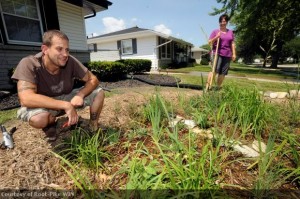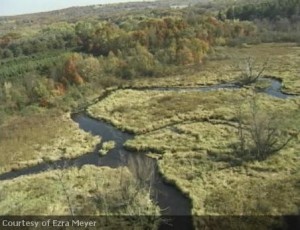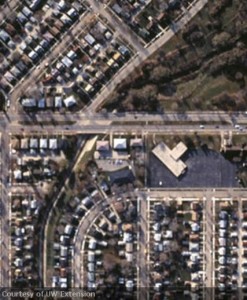Why Build a Rain Garden or Install a Rain Barrel?
Rain Gardens and Rain Barrels are two ways you can capture the rain water that falls on your yard or business so it can eventually soak into the earth or evaporate harmlessly back into the sky instead of becoming a runoff problem for the people and communities that live downhill. Each rain garden and rain barrel constitutes an important victory in Wisconsin’s long standing effort to make all our local rivers, lakes, streams and wetlands both fishable and swimmable. Rain gardens and rain barrels also help communities save money by reducing flooding. And if you grow native plants in your garden you also help the environment by restoring biodiversity.
Where does stormwater runoff come from?
Around 34 inches of precipitation fall on Southeast Wisconsin each year(1), mostly in the form of rain and melted snow. We’re lucky to live in a water rich region, but lately our average annual precipitation has been increasing. In particular, we seem to be getting more storms that drop two or more inches of rain in any given 24-hour period (2).
We call the water that runs off our rooftops, lawns, streets and farmlands “stormwater” and it’s become a costly problem. Excess stormwater washes away topsoil, erodes stream channels, destroys wildlife habitat and leads to flooding in both urban and rural parts of the state. This damage costs taxpayers millions (3).
How did stormwater runoff become a problem?
Most of the native prairies, oak savannas, upland forests and wetlands that intercepted and soaked-up our region’s annual precipitation are gone. In their place are cities, suburbs and farmlands that were purposefully designed to drain water quickly instead of allowing time for it to soak into the earth. Rain gardens and rain barrels restore this lost landscape function.
Is a rain garden or barrel right for you?
We hope the information contained on this web site will help you answer “yes” and encourage you to join other residents of Southeast Wisconsin who are doing their important part to Slow-the-Flow.
(1) Wisconsin State Climatology Office, John Young, Director & Professor Emeritus (LINK)
(2) Wisconsin Initiative on Climate Change Impacts (LINK)
(3) Wisconsin Office of the Commissioner of Insurance (LINK)







